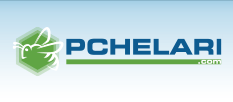Всичкия прашец е със патоенен товар (или е по-правилно да кажа нестерилен). Както е и със всяко едно нещо, което ни заобикаля. Бактериите и вирусите са буквално навсякъде.
При изолирана популация пчели, откъм нови патогени и генетичен материал, вероятността пчелар с един кошер да открие болест в пчелина си е статистически нулева. Ако кошерите са два, вероятността единия от двата да развие заболяване е значително по-голяма. Ако кошерите в пчелина са 50, вероятността някое от семействата да развие болестно състояние в рамките на една година (нямам в предвид да се зарази, патогените винаги са си били там!) е съвсем реална. При пчелар с 1 000 семейства, тази статистическа вероятност е почти 100%. Нивото на санитарен контрол (или липсата му), което е адекватно за пчелар с 10 пчелни семейства, при пчелар с 1 000 семейства не върши работа.
Practical Application: Keep an eye on your yards for failing colonies. Don’t let them get robbed out. If I find a hive that is really sick from something that I don’t recognize, I simply kill the bees and burn the frames. I consider that cheap insurance to keep whatever the heck it was from spreading to the rest of my operationPractical Application: We may not notice that a colony is fighting infections, but the metabolic cost of ramping up the immune response, and the insidious toll on forager lifespan may take a big hit out of colony buildup and honey productionPractical Application: Mix it up in large operations. Avoid having all colonies in a yard coming from the same mother. If you raise your own queens, make sure that they get to mate with a diversity of dronesPractical Application: Manage each yard of bees as its own population, and be careful about mixing sick yards with healthy ones.Practical Application: A number of beekeepers have found that it is worthwhile to reduce the numbers of colonies per yard. The overall return per yard may actually be greater with fewer colonies.http://scientificbeekeeping.com/sick...s-and-plagues/Practical Application: More than 200 tons of honeybee-collected pollen is used annually for bumble bee rearing worldwide. This pollen, unless irradiated, is a likely vector for insect and plant viruses worldwide. It is unwise to feed non-irradiated pollen!
Добре дошли в Българският форум за пчелари.
Резултати от 1 до 10 от общо 363
Разгънат преглед
-
25.01.2015, 23:55 #10There is a danger that by placing too much emphasis on external uniformity, we may lose the much more important objective of performance.
Информация за темата
Потребители разглеждащи тази тема
В момента има 1 потребител (и), разглеждащ (и) тази тема. (0 потребител (и) и 1 гост (и))





 Цитат
Цитат
